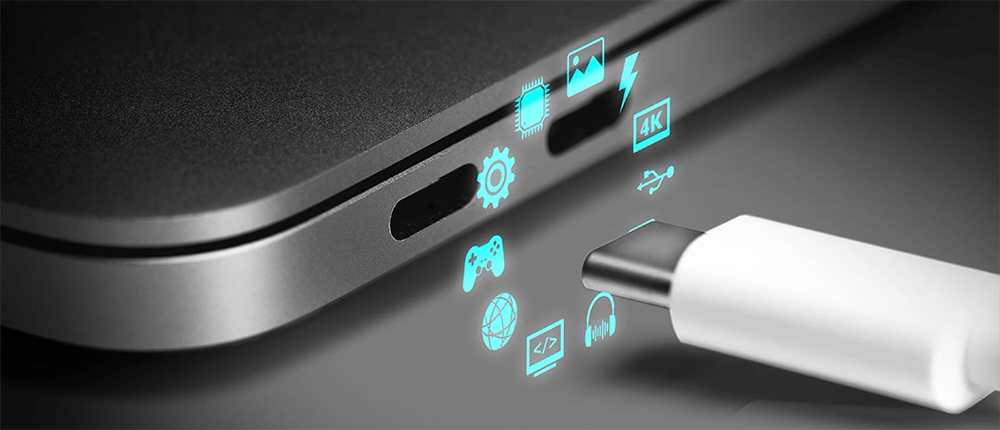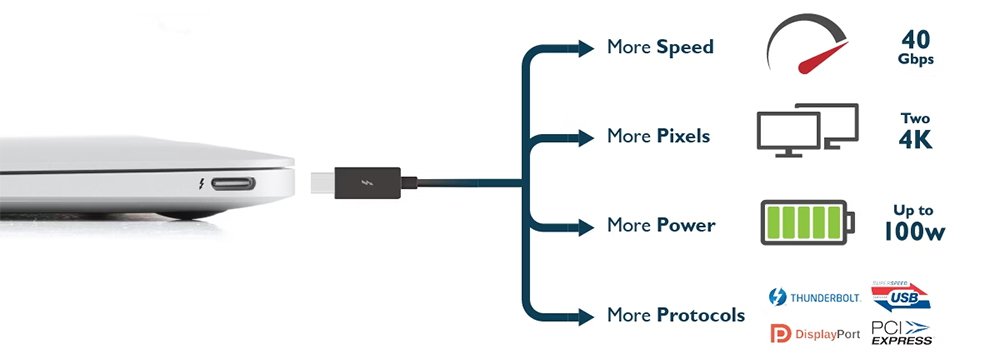Understanding the Faster Charging Capability of USB-C

What is USB-C and Its Technical Background?
USB-C, or USB Type-C, is a universal serial bus (USB) connector designed for improved data transfer, charging efficiency, and versatility. Compared to traditional USB ports, USB-C offers a reversible design, eliminating the frustration of incorrect insertions.
One of the most significant advancements of USB-C is its ability to support USB Power Delivery (PD). This protocol enables dynamic power adjustments between devices, delivering up to 100W of power for fast charging. As a result, USB-C is widely adopted in smartphones, tablets, laptops, and even gaming consoles.

Key Advantages of USB-C Fast Charging
1.Higher Power Output
· Thanks to USB Power Delivery (PD), USB-C can support higher power levels, allowing devices like laptops and gaming consoles to charge faster and more efficiently.
· With the USB PD 3.1 standard, charging power has increased to 240W, making it suitable for even more high-power devices.
2.Universal Compatibility
· USB-C is designed as a universal connector, eliminating the need for multiple proprietary chargers.
· Many leading manufacturers, including Apple, Samsung, and Dell, have adopted USB-C across their product lines.
3.Faster Charging Speeds
· Many Type-C fast charging solutions allow phones to reach 50% battery in under 30 minutes, significantly reducing downtime.
· Devices using GaN (Gallium Nitride) technology in USB-C chargers benefit from higher efficiency and lower heat generation.
4.Supports Multiple Functions
·Apart from fast charging, USB-C supports data transfer, audio, and video output, making it an all-in-one solution for modern electronics.
·USB-C supports DisplayPort and HDMI output, allowing users to connect external monitors using the same port.
Comparison with Other Charging Technologies
·USB-A vs. USB-C
· USB-A connectors have limited power output and slower data transfer speeds.
· USB-C supports higher wattage (up to 100W or more with USB PD) and is more compact.
·Proprietary Fast Charging vs. USB-C PD
· Many brands offer their own fast-charging technologies, such as Qualcomm Quick Charge and
OnePlus Warp Charge.
· USB-C PD is a universal standard, ensuring better cross-device compatibility.
· USB-C PD is a universal standard, ensuring better cross-device compatibility.

Practical Tips for USB-C Charging
✔ Choose Certified Cables – Always use USB-IF certified cables to avoid overheating or power inconsistencies.
✔ Understand Power Needs – Different devices require varying wattages. Using a custom charger with a power output lower than your device’s needs may result in slow charging.
✔ Keep Ports Clean – Dust and debris in USB-C ports can lead to connection issues or reduced charging speeds. Regularly clean the port with a soft brush or compressed air.
Future of USB-C Fast Charging
With the continuous evolution of USB-C technology, the USB PD 3.1 standard introduces even higher power levels (240W), enabling faster charging for high-performance devices.
Moreover, GaN charger suppliers are pushing the boundaries of efficiency, producing compact, high-power USB-C chargers for universal use.
Conclusion
The USB-C fast charging revolution is transforming the way we power our devices. With universal compatibility, higher efficiency, and faster speeds, USB-C is set to remain the industry standard for years to come.
As Type-C charger manufacturers continue to innovate, users can expect even more efficient and versatile charging solutions in the future. Whether you need a custom charger for bulk purchases or a universal charger for multiple devices, USB-C is the ultimate solution.
✔ Choose Certified Cables – Always use USB-IF certified cables to avoid overheating or power inconsistencies.
✔ Understand Power Needs – Different devices require varying wattages. Using a custom charger with a power output lower than your device’s needs may result in slow charging.
✔ Keep Ports Clean – Dust and debris in USB-C ports can lead to connection issues or reduced charging speeds. Regularly clean the port with a soft brush or compressed air.
Future of USB-C Fast Charging
With the continuous evolution of USB-C technology, the USB PD 3.1 standard introduces even higher power levels (240W), enabling faster charging for high-performance devices.
Moreover, GaN charger suppliers are pushing the boundaries of efficiency, producing compact, high-power USB-C chargers for universal use.
Conclusion
The USB-C fast charging revolution is transforming the way we power our devices. With universal compatibility, higher efficiency, and faster speeds, USB-C is set to remain the industry standard for years to come.
As Type-C charger manufacturers continue to innovate, users can expect even more efficient and versatile charging solutions in the future. Whether you need a custom charger for bulk purchases or a universal charger for multiple devices, USB-C is the ultimate solution.